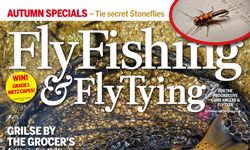When award-winning editor, Diane Kenwood, took over at the helm of Woman’s Weekly, she admits her readers were worried about potential changes.
The unique thing about Woman’s Weekly is the absolute passionate ownership of the magazine by its readers. It is woven into family life because it has been read down generations – grandmother, mother then daughter.
“It’s their magazine,” says Diane, who sees herself as a custodian of the title. “We – the editorial team – are merely passing through.”
Her priority after taking the helm in 2007 was to reassure readers that she respected the brand’s DNA and its heritage. It was a smart move that paid dividends but as Diane explains, that doesn’t mean the audience isn’t keen to try new things.
“Readers want to be current and feel they are reading something of the times. It’s like a house; as long as you don’t mess with the foundations, they are happy to redecorate and, even move the walls.”
Her priority was to evolve. “The magazine had considerable scope. I realised that if it was going to succeed, it needed to modernise.”
Established in 1911, Woman’s Weekly remains as relevant and successful today as it was at the start. It has a healthy circulation of more than 300,000 with a readership of 625,000. Despite declines in sales of lifestyle titles, Woman’s Weekly has remained stable and shown some growth. Why? Critically, it has a strong team who are dedicated to their readers – understanding not only who they are, but what they want and enjoy.
In her eight years as editor, Diane and publishing director Sandy Gale have developed the magazine into a sustainable brand comprising of an additional five monthly publications on knitting, craft, fiction, gardening and vintage, plus more than 30 day-long workshops, an annual three-day show, an online pattern shop – plus a travel partnership.
But do these make money?
“Yes, they’re all profitable, otherwise we wouldn’t do them,” says Diane. “But the majority of revenue still comes from circulation and advertising.”
Sustainability
Her rationale for creating so many brand extensions is sustainability. “Like every other title, we are suffering steady circulation decline, which means we need to look at revenues to ensure we build a sustainable brand for the future.”
The latest figures show that the magazine has achieved a 0.1% circulation rise in a market where sales are dropping by up to 7%.
“We have had to build a magazine brand not just rely on a print title, albeit such a successful one. In our market, print is the medium of choice and we have capitalised on our passionate, engaged reader base.”
The title’s brand strategy began by looking into live events such as craft shows. The team took stands at shows for a couple of years to test the response. “Feedback from these was so positive that we launched our own show four years ago. From day one, this was not only successful, but profitable. It was the response to our workshops at the show that then led us to believe that we could create day workshop events that people would come to.”
Following consistently high demand, those workshops – covering a range of hobbies from fiction, knitting and craft to healthy living, all of which have been held in the Time Inc building in London – are now being extended to regional events.
Diane attributes their success not only to tuning into the interests of her audience, but to taking a considered approach. Feedback is also invaluable. “We don’t bundle into anything. Instead we listen to our readers then find a market we can enter that has scale and is sustainable. Listening is crucial because this is their magazine. They know what they want – to be inspired and entertained,” says Diane, reiterating that their readers are at the heart of everything the team does.
“Readers stay as loyal as they do because to them reading the magazine is like sitting down with a best friend and having a chat; it’s what we work so hard to achieve. Dialogue with them is crucial.”
That dialogue includes readers letting the team know when they are not happy. “The vast majority email us, and every reader comment gets a response, so readers know they are heard and valued. Our job is to inspire, help, reassure and entertain.”
Woman’s Weekly seems to have cornered the market in creating fantastic brand extensions, but can smaller, independent publishers replicate her model? Diane believes they can.
“Yes, but they need to look hard at the market – what’s on offer and where they can offer something that is different but matches the DNA of their brand. Extend it in ways that are sympathetic to the title. Just because the markets are crowded, that doesn’t mean there isn’t any opportunity.”
What’s next for Woman’s Weekly? “The magazine will remain at the heart of our brand building focus. There is such exciting potential for cross platform growth and more experiential opportunities as well. It has been a leader for 104 years and I hope it will continue.”












